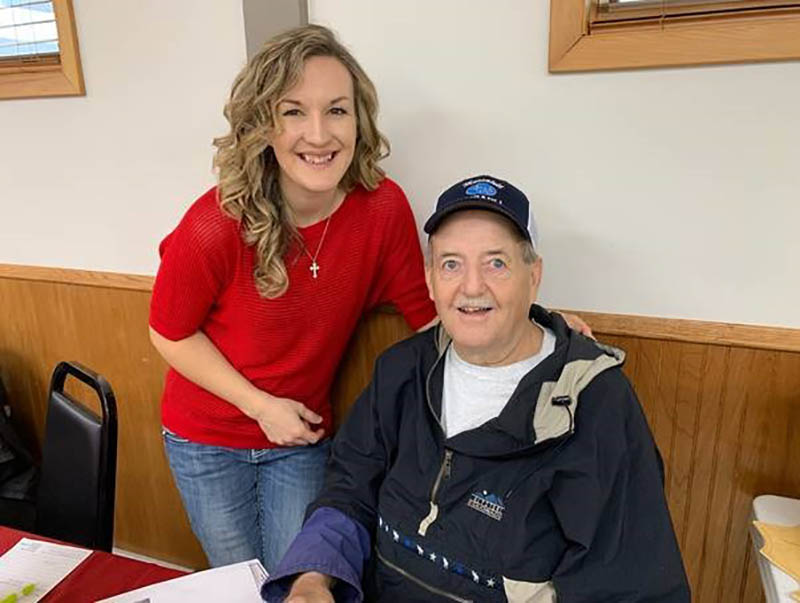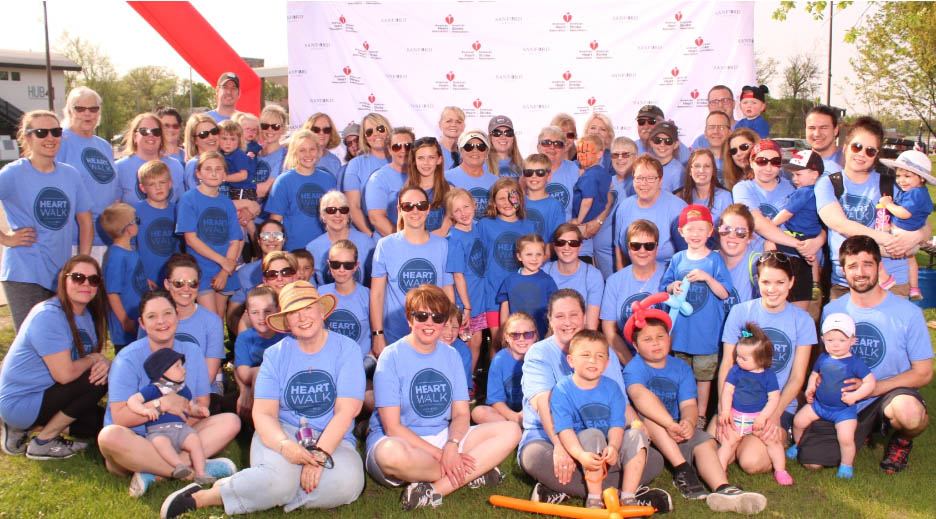Each year, Sanford Health takes part in the American Heart Association Heart Walks.
The goal of these heart walks is to collect money to support the AHA’s mission of defeating heart disease in America, while also creating awareness of heart attacks and strokes throughout the community.
From no walking to three miles
Walking means a lot to Kevin “Smilie” Glawe of Vergas, Minnesota. At one time, his rare heart condition left him struggling to walk more than 200 feet. But thanks to a new technology, he’s grateful to now be able to walk 3 miles a day.
Glawe welcomed walkers to the 2019 Lakes Area Heart Walk in Detroit Lakes. He spoke about what his heart condition had turned his life into, and how his life has turned around.
“The doctors say that my heart muscle is lazy, causing fluid build-up in my body,” said Glawe, who also has type 2 diabetes.
For two years, before Glawe was diagnosed, he had a procedure every three weeks to remove the excess fluid. That generally ranged from four to five gallons at a time.
“I had a hard time breathing, and I could not do anything,” he said.
Glawe then met with a Sanford Health heart specialist who performed tests and concluded that Glawe would need a heart transplant.
Glawe was referred to a Minneapolis hospital for the major procedure, and there he was diagnosed with restrictive idiopathic cardiomyopathy heart failure. His liver had become damaged as well, so a combination heart and liver transplant was considered.

New technology, new lifestyle
However, a doctor there then suggested Glawe might be a good candidate for a new technology, the CardioMEMS Heart Failure System, rather than a transplant.
The system’s sensor, which is implanted into the pulmonary artery, transmits data about pressure and rate directly to a doctor, daily for Glawe. The doctor can then decide whether treatment should be adjusted before symptoms arise.
Glawe had the sensor installed in March 2018. “This is one of the best things that has happened to me,” he said.
Glawe hasn’t required a procedure to remove excess fluid since then. He started walking, and now the former 352-pound man is 120 pounds lighter. He wouldn’t have guessed that could ever happen. “The doctors said I had to lose 100 pounds and exercise every day. I said to myself, ‘I can’t do that.’ ” Until he did it.
His goal now is to get his weight down to 200 pounds. Dr. Al Maluli’s nurse, Marcy Skiple, “checks in with me frequently to make sure I stay on track,” Glawe said.
After he recovers from a recent foot surgery, he’ll resume his work on that goal. Of course, it’ll involve plenty of walking — something he’s thrilled he can do now.
Creating awareness
Nicole Cox, M.D., an internal medicine doctor in Detroit Lakes, said it’s important for the community to be involved in heart attack and stroke awareness, as the two are prevalent and primary health issues.
“For both heart attacks and strokes, timing is so important. Seeking medical attention early is a huge indicator of how those outcomes will turn out,” Cox said. “We want people to be aware of those heart attack and stroke symptoms, not only for themselves but also to be able to recognize them in other people.”
Cox said one goal is to increase community participation each year.
“This isn’t just an elderly issue — it’s seen in people of all ages,” Cox said. “We want to get people to think about it on a regular basis and start focusing on those healthy lifestyles and their diet and exercise.”
More stories
- Heart health: RN uses her title to spread awareness
- Coronary calcium screening reveals hidden heart problems
- Less invasive heart procedure TAVR ‘like winning lottery’
…
Posted In Community, Detroit Lakes, Health Information, Healthy Living, Heart
